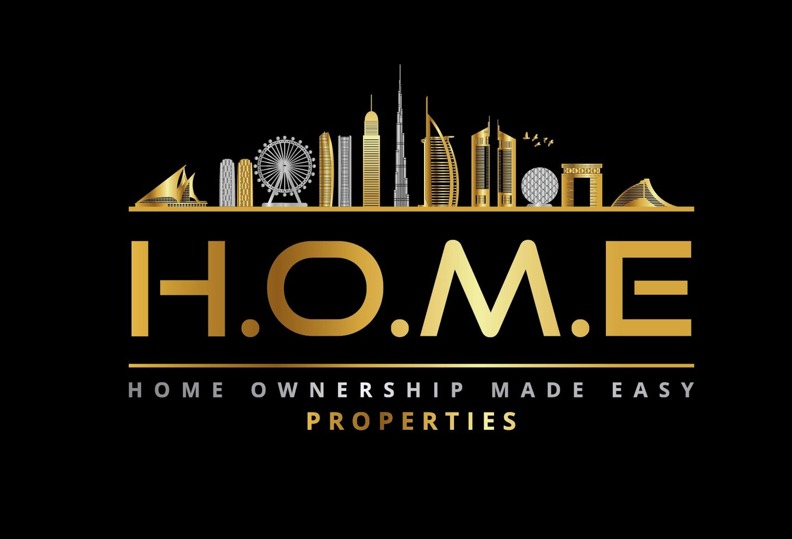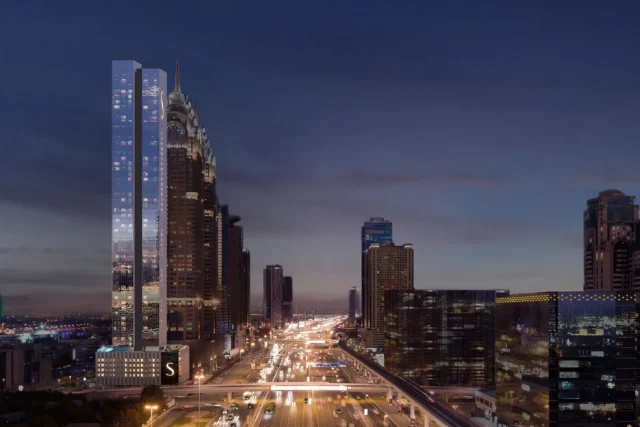
In an era when global investors are scrutinizing real estate markets more than ever, one name is making waves in Dubai’s property sector: Binghatti Holding. According to multiple industry data sources, Binghatti is leading the pack in 2025 in terms of year‑to‑date unit sales and project handovers — a remarkable feat in a highly competitive market.
From Ambition to Execution: The Numbers That Matter
Let’s begin with the hard figures. As of October 2025:
- Binghatti has sold nearly 12,000 residential units across its portfolio.
- The company launched 13 new projects in 2025, with a combined Gross Development Value (GDV) of ~AED 12.28 billion (USD ~3.3 billion). These projects include more than 8,200 residential units with a total sellable area exceeding 6.2 million square feet.
- Its seven project deliveries in 2025 account for over 20 % of new project completions in Dubai by unit count.
- In the first half of 2025, its net profit jumped by 172% year-over-year to AED 1.82 billion, with revenue up ~189%.
- The company’s development pipeline currently encompasses ~38,000 units across more than 38 projects in prime locations (Downtown, Business Bay, JVC, Meydan, etc.).
These metrics are not just about scale; they speak to Binghatti’s capability to convert land, capital, and vision into deliverable, sellable assets — a core challenge in real estate.
What Drives Binghatti’s Market Dominance?

How does a real estate developer rise to such dominance in a market as dynamic as Dubai’s? A few strategic pillars stand out:
- Vertically Integrated Model & Speed of Execution
Binghatti emphasizes inhouse control over land acquisition, design, construction, sales, and after-sales service. Chairman Muhammad BinGhatti notes that their vertical model gives them agility to deliver projects within tight timelines, which helps maintain buyer confidence. - Mid‑Luxury / Mid‑Segment Focus
A significant share of its projects are in the AED 1 million to 3 million range — a sweet spot for residential demand in Dubai. Because many buyers target this range (for owner-occupancy or mid-tier investment), Binghatti’s alignment with this segment has given it strong traction. - Branded Residences & Iconic Partnerships
The group is developing branded luxury residences in collaboration with globally recognized brands such as Bugatti, Mercedes-Benz, and Jacob & Co. This adds prestige, marketing buzz, and perceived added value to its portfolio. - Strong Local & International Demand
Over half (~61%) of its buyers in H1 2025 were non-resident / international buyers, indicating that Binghatti is capturing global investment flows into Dubai. - Strategic Landbank Expansion
Its recent acquisition of a mega plot in Nad Al Sheba 1 (8.2 million sq ft) is meant to support its first master‑planned community with projected value exceeding AED 25 billion. - Financial Discipline & Capital Access
The company’s financials (strong profits, increasing revenue, low leverage) have helped it fund expansion and maintain investor confidence.
Key Projects: Flare 01 & Flare 02
Among its standout launches in 2025 are Flare 01 and Flare 02, two architecturally distinct towers in Jumeirah Village Triangle (JVT).
- Flare 01 comprises 844 units (sellable area ~746,386 sq ft; GDV ~AED 1.24 billion)
- Flare 02 contains 613 units (~539,812 sq ft; GDV ~AED 915 million)
- Notably, ~95% of the units were sold within the first 90 days post‑launch, signaling strong market appetite.
These projects illustrate Binghatti’s approach: high design ambition, strong branding, and market-sensitive pricing.
Implications for Dubai’s Real Estate Ecosystem & Beyond
Binghatti’s dominance in 2025 is not just its own success story — it indicates broader trends and raises some key questions for the market:
- Supply Constraints & Infrastructure Pressure: If a single developer can account for over 20% of new completions, it highlights the scale required to move the needle in Dubai — and the challenges others face in matching speed, capital, and execution.
- Competition Intensifies: Other developers will need to sharpen their operating models, embrace vertical integration, or differentiate more aggressively (by branding, amenities, sustainability) to compete.
- Investor Confidence & Global Capital Flows: The strength of Binghatti’s international sales share reflects Dubai’s continued pull as a global real estate destination. This also means that macroeconomic, currency, geopolitical, and regulatory factors can play an outsized role in shaping demand.
- Risk Management & Execution: The curveball for any developer is execution risk — delays, cost overruns, regulatory bottlenecks, or financing stress. Binghatti’s success thus far will be tested by how it maintains discipline and delivers on all fronts.
- Replication vs. Uniqueness: As more developers chase volume, the risk is commoditization. Success may increasingly depend on uniqueness of design, community integration, smart/green features, and post‑handover value.
Challenges & Areas to Watch

While Binghatti’s 2025 performance is undeniably impressive, several challenges remain:
- Market Saturation & Pricing Pressure: Overreliance on volume in mid-tier segments could lead to downward pricing pressure if supply outpaces absorption.
- Regulatory & Approval Delays: Dubai’s regulatory landscape and approvals process can create bottlenecks, especially for large-scale projects.
- Interest Rates & Financing Costs: Rising global interest rates, cost inflation, and tighter capital markets may squeeze margins.
- Sustainability & ESG Demands: Buyers and regulators increasingly expect green building practices, energy efficiency, and long-term maintenance — areas where developers must continually invest.
- Geopolitical & Currency Risks: With a large portion of buyers being international, forex fluctuations, visa rules, and geopolitical stability in source countries could impact demand.
Outlook & Strategic Imperatives
Given its strong 2025 showing, what should Binghatti and similar developers focus on to sustain momentum?
- Deepen Brand Equity: Continue high-visibility, branded, and architecturally bold projects to stay differentiated.
- Smart Communities & Sustainability: Integrate smart infrastructure (IoT, energy management, automation) and green design to address future buyer preferences.
- Balance Scale with Selectivity: Rather than chasing volume at any cost, maintain a balance between scale and value (profit margins, project selectivity).
- Innovation in Financing Models: Explore alternative capital models — pre-sales, REITs, structured finance — to reduce dependency on high leverage.
- After-sales Excellence & Retention: Strong post-handover service, warranties, and community management can help preserve brand reputation and resale values.
- Geographic Diversification: While Dubai remains core, expansion into other UAE emirates or GCC markets may hedge demand fluctuations.
Conclusion
Binghatti’s rise in 2025 is more than a headline — it’s a case study in how ambition, execution, design, branding, and financial discipline can converge in real estate. As the property market evolves under new economic realities, the benchmark it sets will challenge and inspire peers across the Middle East and beyond.




Leave a Reply